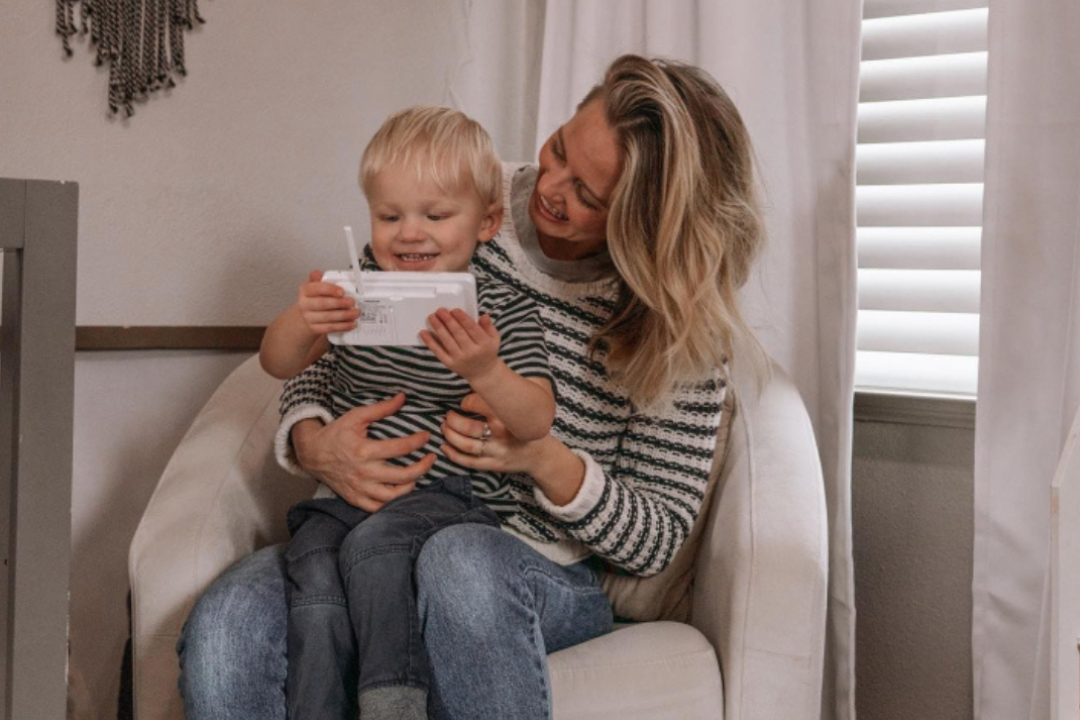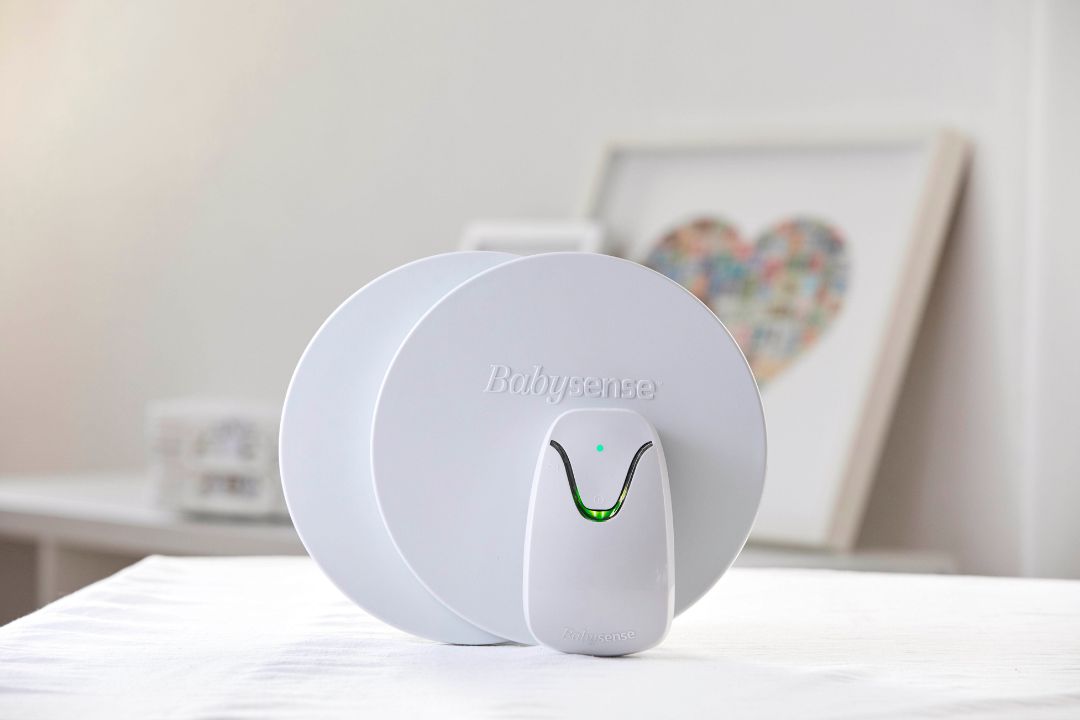If you are expecting a little one as a new addition to your family, then you know that as a parent, your child’s well-being comes first above everything else. The peace of mind that comes from knowing that your little one is doing well is unmatched.
So if you are bringing your bundle of joy home from the hospital, you want to make sure that everything is in place. You will want to be able to know what is going on with your baby all the time. That is where video baby monitors come in!
Baby monitors have, over the years, become an essential part of infants’ nurseries. This fantastic technology allows parents to balance between taking care of their child and daily activities. Parenting is not supposed to be stressful, and these modern technologies are continuously helping to take some of the burdens off of parents.
So then comes the question; how do video baby monitors work? By the end of this article, you will have all you need to know about video baby monitors. Read on to discover!
Typical Workings of a Baby Monitor
The technology behind almost all baby monitors comprises of two key components – a transmitter and a receiver. The transmitter is usually placed in the baby’s nursery while the parent/caregiver has the receiver in another part of the house. The transmitter sends signals to the receiver, allowing the caregiver to monitor their young one via the receiver remotely.
There are different types of baby monitors, and therefore, the signal sent out by the transmitter to the receiver usually depends on the style. The good thing about baby monitors is that you can go about with your day-to-day activities without worry unless you get a distress call or notice something wrong at the little one's end.
Video baby monitors have quickly gained popularity among parents and caregivers since they allow you to not only hear your little one but see them too. Whether you are a frequent traveler or busy at home, a reliable baby monitor can help make your days and nights easier.

How Video Baby Monitors Work
The most basic baby monitors that were first invented relied on the transmission of audio signals through radio waves. Since that time, several advancements have been made, and currently, modern baby monitors have audio, visual, and even several sensors that can monitor movement and breathing.
These advanced baby monitors utilise motion detection technology, and some of them use internet technology for transmission. Let us take a look at the different types of baby monitors and how they work.
Audio/Analog Baby Monitors
These are the oldest type of baby monitor. They operate by having a transmitter – usually a microphone – that picks up sounds around your baby’s crib, sending them to a receiver via high-frequency radio waves. This signal is mainly to avoid interference from other standard radio frequencies.
Newer versions of audio baby monitors can search multiple frequencies to find open bands within which to operate. This ability makes them better in terms of lower signal interference, and the concept was used to develop video baby monitors.
Video/Digital Baby Monitors
On the other hand, video baby monitors are more advanced compared to analog baby monitors. They, too, have a single transmitter and receiver but transmit signals differently. The transmitter, in this case, is usually a camera with a microphone.
Digital baby monitors transmit signals via encrypted codes over multiple frequency bands in a partially random pattern, familiar only to the baby monitor set.
This transmission method is known as Frequency-Hopping Spread Spectrum (FHSS), and it facilitates video transmission while securing the signal and minimising frequency interference. The encrypted message is decoded at the receiver, and therefore there is a less likely chance that you will pick up any sounds from the surrounding.
These baby monitors cost slightly more than analog baby monitors since they provide secure and better quality transmissions. They also offer more superior, reliable and accurate monitoring.
Most new video baby monitors have a two-way communication feature. This technology utilises radio waves and allows signals to be sent and received through the transmitter and the receiver. This way, apart from just monitoring, you can also talk to your toddler from any room in the house. Babysense video baby monitors have an extended range of up to 960 feet.
This handy device allows your toddler to feel your presence around them when you talk to them, even when you are not in the same room. The Babysense V24R-2 offers you this great feature.
These new models also often come with several other convenient features such as:
- Pulse monitors (only if you purchase a bundle including a breathing movement monitors)
- Motion monitors
- PTZ (Pan/Tilt/Zoom) camera functionality
- Preset lullabies
- White noise
- Night lights
- Infrared
- Night vision
- Other low light options
All of these features assure you that your little one is safe round the clock.
Babysense video baby monitors also have a temperature feature, which allows you to know whether your bundle of joy is feeling a little too cold or too hot. They also have a fantastic ECO/VOX mode that saves power, and either come with PTZ cameras or cameras that offer a 360 degrees manual pan, and a 90 degrees tilt.
You can now check in on your little one without having to go into their room. The lullaby and white noise feature that comes with Babysense video monitors help you sleep train your little one without physically interfering and putting them back in bed. It teaches them independence and self-reliance early.
Wi-Fi Based and Smartphone Video Baby Monitors
The constant advancement of internet technology has allowed for the development of innovative baby monitoring. It is now possible to monitor your little one from any part of the world, so long as you have a good internet connection through these new types of video baby monitors.
The Wi-Fi-based baby monitors are advanced digital baby monitors that transmit signals to a local Wi-Fi router, sending these signals to your smartphone or tablet in real-time as long as you are connected. This takes off some of the anxiety that comes with leaving your little bundle of joy as you resume work.
Many of these new models of baby monitors are compatible with smartphones, and once you download the companion app, you are ready to go. The smartphone now acts as the receiver for this type of baby monitor. Further, any of them are equipped with Voice Over Internet Protocol (VOIP), which allows you to talk to your little one or the babysitter through the app in real-time.
Wi-Fi-based baby monitors also allow you to record and keep whatever is transmitted, and therefore, you can observe your little one's sleep patterns, prove that they are climbing out of their crib, or just store the footage for the future. These can be stored in memory cards, computers, or even cloud storage.
Similar to other internet devices, Wi-Fi-based baby monitors can experience communication-related issues due to poor network signal, signal jamming/disruptions, or if you are sharing the same network in a highly-populated area. Also, in power outages, you lose the live feed feature unless you have a power backup.
The main disadvantage that comes with Wi-Fi-based baby monitors is their more frequent hack and intruder attempts. With devices connected to the internet, the chances of hacking are never zero.
It is also vital that your Wi-Fi router is password protected to prevent intruders from accessing it. Make sure to use a strong password that you cannot easily bypass because the router’s security determines privacy.
For this reason, many parents choose not to invest in a WiFi monitor and, instead, choose one that is less susceptible to hackings such as those from the Babysense range.
Frequently Asked Questions
Do you still have questions? Here are some of the frequently asked questions about video and other types of baby monitors.
How Private Are Baby Monitors?
As a parent, your main aim is to ensure that your little one is shielded from the prying eyes of intruders. Therefore, it is common for you to have questions concerning the privacy and safety of these baby monitors and the signals that they transmit.
The type of baby monitor that you are using will determine the security of the signals transmitted. For instance, analog/audio baby monitors broadcasting on an open channel can be prone to hijacking the signal if someone close by gets on the same track.
On the other hand, digital/video baby monitors are not easy to compromise because of Frequency-Hopping Spread Spectrum (FHSS) technology. Signals from these baby monitors are encrypted, and only the transmitter and receiver know the channel switching pattern. This encryption makes it very hard for them to be accessed by an intruder.
In the internet and technology era, Wi-Fi-based baby monitors are the most affected in terms of hacking. Because they use Wi-Fi routers that utilize internet protocols (IP), a hacker can stage an attack from anywhere in the world. This does not mean that attempts are usually successful.
To enforce high security on your Wi-Fi-based monitor, you should ensure that a strong password secures your connection. It is also important that the firmware of your devices are all up-to-date to help you counter any intrusion attempts.
Nonetheless, the well-being of your little one is the main priority, and therefore you should not deter yourself from having a baby monitor. So long as a strong password protects your connection, it is difficult for hackers and intruders to access your baby monitor.
Privacy is a crucial matter; Babysense monitors are encrypted and have a closed circuit. What this means is that Babysense non-WiFi video baby monitors are hack-proof. A hacker would need military-grade technology while in the same room as the baby monitor to attempt to gain access. And even then, it still will not be easy.
How Do You Set Up Your Baby Monitor?
Setting up your baby monitor is one of the most common concerns among parents, especially new parents. Similar to most home installations, you cannot just randomly decide to mount a baby monitor anywhere. You need to consider the safety of your toddler, the best viewing angle, among others.
When installing the baby monitor, it is recommended that it is set up somewhere out of the little one’s reach. Babies are curious and will want to explore any foreign items they notice. This can not only pose harm to your baby but the potential damage to the device.
It is also essential that when installing the baby monitor, you choose a location that offers a clear and ideal view of the baby’s room and crib. You should ensure that you can see your little one and their surroundings.
If you intend to move the baby monitor around depending on where you and your baby are in the house, then permanent installation on the wall is not advisable. You can place the gadget on a shelf or a table, out of the baby’s reach wherever you are in the house. Ensure that you have a clear shot of the baby and the surroundings even when placing it on a shelf or table.
For a permanent mounting of the baby monitor, you should choose a location you are confident you will not want to be changed later to avoid inconveniences. If you use cables, it is appropriate that you hide any from the child. If necessary, you can use cable covers. The well-being of your baby should guide all decisions and setups.
Why Do You Need One?
We live in an era of fast-paced and career-driven lifestyles, and bringing up a child has become increasingly challenging in these circumstances. Juggling between work and family life is increasingly important since we cannot be at several places simultaneously.
However, modern tools have made it possible to carry out our day-to-day activities while keeping an eye on our beloved little ones. New models of baby monitors come bundled up with so many incredible features that unburden parents. The efficiency and flexibility are exceptional, and you are assured that even as you carry on with your work and daily activities, your baby is safe.
Conclusion
Parenting should not be a scary affair that makes you cringe at the thought of it. In today's highly demanding environment, some assurance that someone has your back can go a long way. The feeling of connection and reassurance despite the separation distance helps parents get through some of the most challenging times.
Babysense has a variety of modern video baby monitors to select from. You can even observe two children in separate rooms through a single-parent unit via the split-screen option. Babysense baby monitors are secured by state-of-the-art FHSS technology, making them hackproof.
You can rest peacefully at night knowing that your baby is safe and sound when you use Babysense devices. Even when they become mobile and move around more, the PTZ option allows you to move the camera around quickly and track their movements.
Since 1991, Babysense has been a trusted leader in the baby monitor industry and has only gotten better with the years. You cannot have eyes on your little one every moment round the clock, but Babysense video baby monitors give you this feeling.



